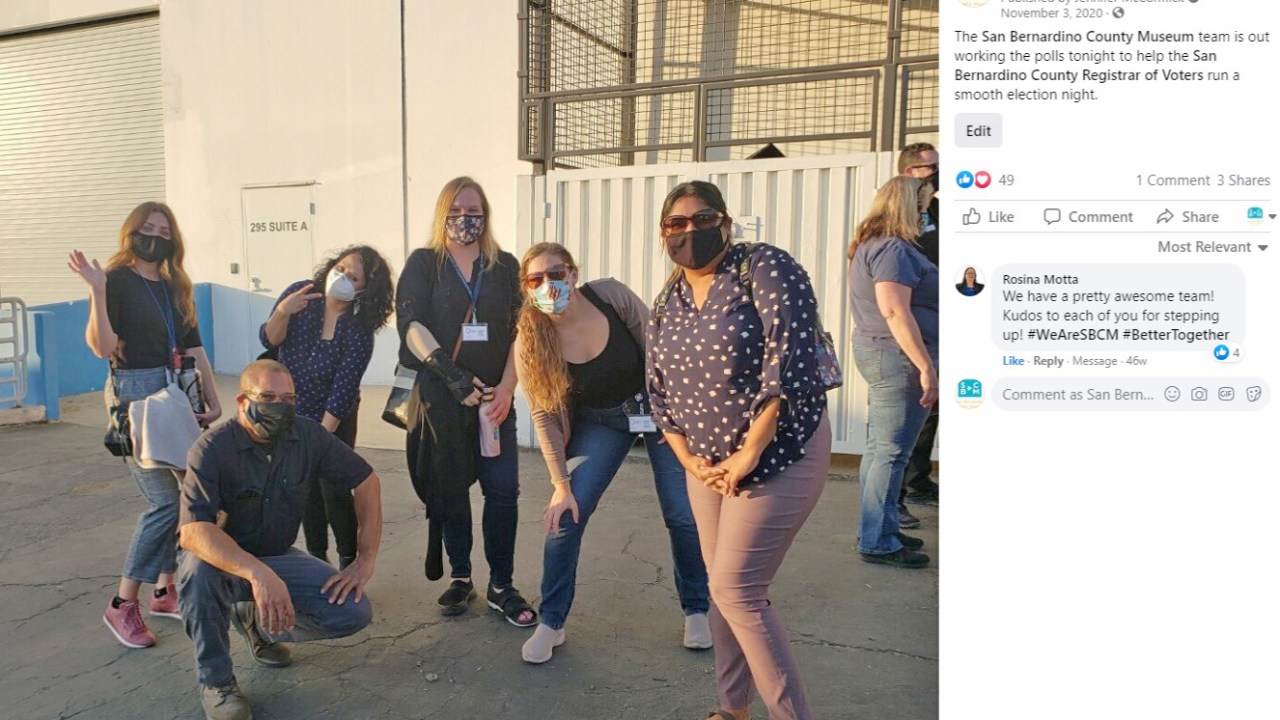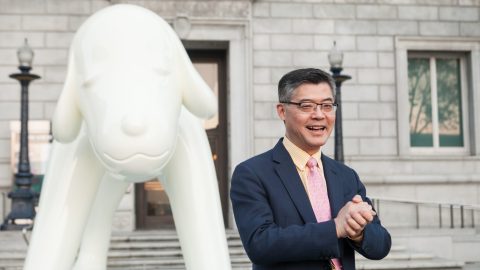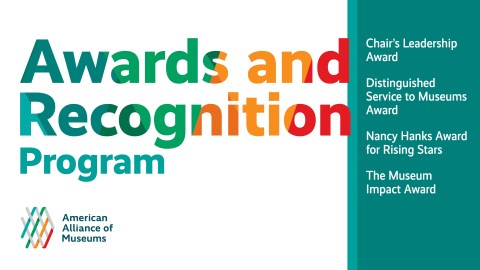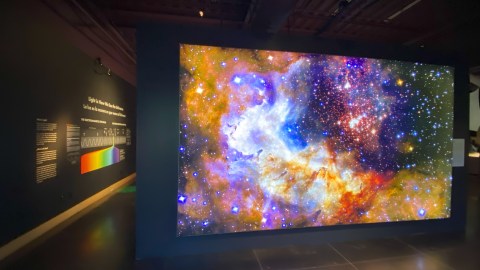
Last month I put out a call on Museum Junction for examples of museums helping their communities plan for and respond to disasters. Among the many exceptional stories submitted by respondents, one stood out by virtue of framing the issue as unexceptional. Today on the blog, Melissa Russo, Director of the San Bernardino County Museum, explains why all California government museum workers expect to be called to service in times of need.
–Elizabeth Merritt, VP Strategic Foresight and Founding Director, Center for the Future of Museums, American Alliance of Museums
Last year, an ICU nurse at Arrowhead Regional Medical Center might have needed a morale boost during a particularly stressful week, and found collegial support through the work of Brianna Correa, a guest services cashier from the San Bernardino County Museum. Last fall, some of Brianna’s colleagues from the museum’s curatorial, educational, security and maintenance staff served as poll workers, drivers, and filled other critical needs during the election. This deployment of museum staff into critical emergency roles was a result of California’s history and legislative code, but it is a model that more states might want to consider.
Californians have always lived with the reality of natural disasters. The state has well over a century of approaching man-made and natural disasters with extensive and intelligent planning and preparation. At the heart of the state’s emergency program is leadership, constituent empowerment, coordination, and partnerships. One of the most valuable elements that ensures flexibility and resiliency is the mandate of utilizing public employees in emergency response. While other states and government agencies (like FEMA) have trained reserves, I’m not familiar with anything quite like our program.
California Government Code 3100-3109 states: “It is hereby declared that the protection of the health and safety and preservation of the lives and property of the people of the state from the effects of natural, manmade, or war-caused emergencies which result in conditions of disaster or in extreme peril to life, property, and resources is of paramount state importance requiring the responsible efforts of public and private agencies and individual citizens. In furtherance of the exercise of the police power of the state in protection of its citizens and resources, all public employees are hereby declared to be disaster service workers subject to such disaster service activities as may be assigned to them by their superiors or by law.”
As a department of San Bernardino County, the San Bernardino County Museum staff – along with all public employees who work for California’s other 57 counties, 482 cities and towns, 2894 special districts, 1,037 school districts, and 518 state agencies – can be called upon as disaster service workers (DSW) in the event of an emergency.
California’s coordinated and legislated emergency response efforts date back to the early 1900s with the California Emergency Council, while the laws leading to the establishment of the DSWs were developed in the 1940s when the nation’s concern about invasion from the Pacific led to the creation of the California War Council. At the time, it was recognized that the capacity to address attacks or natural disasters could only be successfully achieved if personnel assistance could be deployed immediately. In a large scale emergency, as was evident during the COVID-19 pandemic, it’s not enough to have immediate access to specifically trained emergency personnel, like EMTs, police, fire, doctors, and nurses. There are numerous support positions needed – information phone banking, community check-in stations, post-earthquake cleanup, etc – that must be mobilized quickly, and can be filled with recruits that have entirely different job descriptions, but have the requisite applicable skills. With basic instruction and coordination these recruits can provide effective and much needed support. In 1970, the California Emergency Services Act created the Governor’s Office of Emergency Services, establishing our current legal framework for these emergency deployments.
In San Bernardino County, disaster response implementation involves coordination among the County’s Board of Supervisors, the County Administrative Office, the Office of Emergency Services and the department of Human Resources, through an emergency declaration process. So, when people are hired, and before they begin the duties of their employment, they take and subscribe to the oath or affirmation set forth in the California Constitution which establishes their duty as a public employee, including as disaster service workers in times of need. Whether they are in the office of the county tax collector or district attorney, the library, animal control, or museum, they know that at any time during their employment they may be called for deployment. From union memoranda to employee badges, there are reminders of this critical role. Whereas San Bernardino, just one county in the state, has 22,000 employees, it’s easy to see that the potential pool of DSWs in California is immense, with the added benefit of an efficient geographic spread.
During the pandemic, once the Board of Supervisors had ratified the public emergency declaration, much of our museum staff were reassigned to temporary roles in the county during the museum’s public closure. Assignments included the Arrowhead Regional Medical Center, at County “MPODs” (Medical Point of Dispensing) sites, and as contract tracers. During the November 2020 election the office of the Registrar of Voters, impacted by the COVID shortage of applicants for temporary work, requested county staff to support their efforts, by acting as poll workers and drivers.
Brianna Correa, a five-year museum veteran, first joined the museum as an anthropology intern while still in high school. Now a college senior, Brianna juggles her Cal State Pomona studies with her museum employment as a guest services cashier. During our pandemic closure, while many positions like finance, curators, educators, could continue in their existing roles with tasks like virtual programming, the public-facing cashier function was deemed “non-essential.” Never having worked in government before my current position, I stressed over what would happen to these workers, and others – was their county employment at risk?
I needn’t have worried. Behind the scenes at the county government center, the response wheels were rapidly turning to address the pandemic emergency. During March and April of 2020, when museums across the state were announcing furloughs and layoffs, our museum department was providing a list of names and skill-sets to HR so the county response team could match these skill-sets across the significant scope of COVID response needs.
Brianna was one of two museum staff assigned to the regional hospital for an entire year, and returned to us when the county museum finally reopened to the public in March 2021. During her deployment at the hospital, she assisted with internal customer service and social media communications, including the promotion of amusing theme days for hospital staff. Her museum training in these seemingly non-emergency response tasks proved valuable for the times, when the morale and mental health of our front line workers was a priority.
In the fall of 2020, the severe shortage of job applicants nationwide was being felt by all of our community, and impacted hiring in our county departments. For the Registrar of Voters, this was a particularly critical time with a complex election coming up. The worker shortage was a result of the pandemic emergency, so the county was able to apply the DSW process to meet the sizable need for poll workers, drivers and other related election needs by using county employees. Because these deployments had a narrow window, the museum was able to deploy curatorial, educational, security and maintenance staff, with minimal impact to their duties at the museum during our closure.
The adage “many hands make light work” truly characterized our region’s COVID response. It’s hard to imagine any other emergency response as prolonged as this pandemic. I have gained a deep appreciation for this efficient, coordinated state process that truly operates at the local level. Museum workers are not front line workers. But for our staff, serving as disaster service workers both highlighted and enhanced our essential role as public servants.
___
Melissa Russo was born and raised in California, and despite having experienced many earthquakes and droughts, she continues to choose California life over any other location in the world. She is the Director of the San Bernardino County Museum, and has served as an AAM Accreditation Commissioner since 2019.








